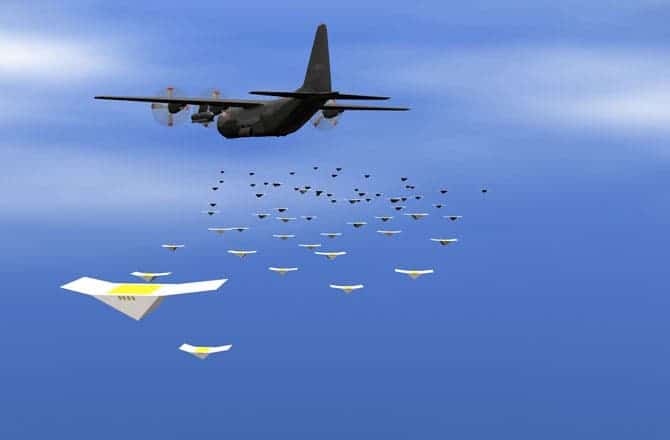A mini-drone that fits in the palm of your hand could give the military an upper hand on the battlefield by providing key intelligence readings. Hundreds of these small, plastic drones could be dropped off a flight and left to scatter across the battlezone. Though they don’t have any engines, these “Cicada” drones are equipped with sensors that help adjust the gliding pattern, directing the drone towards a dropzone with an accuracy within a couple of feet. These are hard to spot since they easily disguise as a bird from afar and once behind the lines can use their sensors and microphones to spy on enemy positions. These can also prove very useful for civilian missions, most notably for gathering meteorological data.
The name “Cicada” is after a species of insect that lays dormant underground for a couple of years, before it bursts through by the swarms. Once outside the insects quickly reproduce, then drop to the ground dead. Researchers at the Naval Research Laboratory felt inspired and wondered if they could design and deploy drones that are so tiny and numerous, that’s impossible for the enemy to shoot down every single one them. This is how the military’s Cicada, or Covert Autonomous Disposable Aircraft, was born. It’s the smallest and cheapest of any military drone developed thus far. The prototype cost only a thousand dollars, while a full scaled manufactured model could drop to about 250 USD a piece.
It only contains 10 moving parts and no engine, but it makes no difference since it can make its way by gliding just as well. A built in GPS receiver tells the little drone, which looks more like a paper airplane than a military-grade aircraft, where it needs to land, so it constantly adjusts its wings and rudder to get there. In a test about three years ago in Yuma, Arizona, Cicada drones were released from 57,600 feet (17,500 meters). After dropping and gliding for about 11 miles, the drone landed within 15 feet of its target. This could be refined even further, so later versions might land right atop, with pinpoint accuracy.
“It looks like a bird flying down,” said Daniel Edwards, an aerospace engineer at the Naval Research Laboratory. But, he said, “it’s very difficult to see.”
“They are robotic carrier pigeons. You tell them where to go, and they will go there,” Edwards said.

It would’ve been nice if the Cicada was also fitted with some cameras, but this would have severely compromised the design and entire scope of the drone. Once you have a camera, you also need a storage medium and hardware that can handle serious bandwidth. But it does have ears, which are often more than enough. For instance, a Cicada dropped behind enemy lines in key points near a road can eavesdrop using its built-in microphone. Based on the noise and ground vibration, you can then learn when, how many, and what kind of vehicles are using the road. Cicada is also equipped with temperature, air pressure and humidity sensors.
What’s more, the Cicada is extremely robust. In test flights, the engineers flew prototypes through all sorts of obstacles. Sometimes it would get hit pretty hard, but came out in working condition nevertheless.
Edwards said. “You can thrown them out of a Cessna or a C-130,” he said.
“They’ve flown through trees. They’ve hit asphalt runways. They have tumbled in gravel. They’ve had sand in them. They only thing that we found that killed them was desert shrubbery,” he said
According to Edwards, both the Pentagon and intelligence agencies are very interested in the Cicada and closely following the research.






